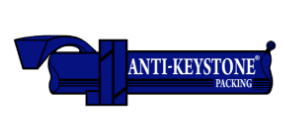About Mechanical Compression Packing:
The problem of containing fluids in pumps has existed since the invention of the lift pump many centuries ago. Initially the rods on these early reciprocating pumps were sealed with lubricated fibers. Since that time, many types of fluid handling equipment have been developed which required increasingly sophisticated sealing devices.
The oldest of these devices is still the most common – mechanical compression packing – so named because of the way it functions. Mechanical compression packing is also called braided packing, gland packing or rope packing. It is found in almost every industry but is primarily used in processing industries. These can include pulp & paper, hydroelectric & power generation, petrochemical & refineries, mining, pharmaceuticals, wastewater treatment and among many other industries and applications. It is used to seal fluids and gases such as water, steam, acids, solvents, petroleum and other chemicals under a wide range of operating conditions.
Mechanical packings are made from various compliant fibers and appropriate lubricants that are selected for their suitability in specific applications. These materials are usually braided on specialized machines designed to generate a square cross section. This “square rope” is then cut into a number of rings that are fitted to the equipment shaft and inserted into the stuffing box (an annular space about the shaft in the equipment housing) which retains the packing.
The installed packing is compressed by tightening a gland against the packing, which is then forced to expand radially between the shaft and housing, creating a seal. Mechanical packings are the easiest sealing device to install, require little maintenance after installation, and when properly selected and installed, provide reliable service.
Mechanical compression packings used in both reciprocating and rotating equipment, depend upon the existence of a thin fluid film between the packing surface adjacent to the moving shaft for lubrication and cooling. Upon start-up, this film is initially provided by lubricants melted out of the packing itself (break-in lubricant). Shortly after start-up, the fluid being sealed (or a lubricating barrier fluid) provide this cooling lubrication on a continuing basis. If a clean barrier fluid (often called seal water) is used, there is usually a lantern ring (seal cage) inserted in the packing set at the axial location of the barrier fluid inlet.
During the break-in period, the gland is adjusted to gain control of leakage to reduce it to a minimum while maintaining the cooling and lubricating film on the shaft. If this process is too rapid or if the lubricating film is eliminated by over-tightening the packing set on the shaft, the packing can “burn out”. When this occurs, the inner surface of the ring set glazes (becomes hard and non-compliant) and the equipment must be repacked.
______________________________________________
Mechanical packings are made in a variety of constructions. Each type of construction has a particular set of advantages and some disadvantages when compared to another construction. The principal types of braid which have been introduced over the past few centuries along with a radical improvement to the fourth type are described below:







